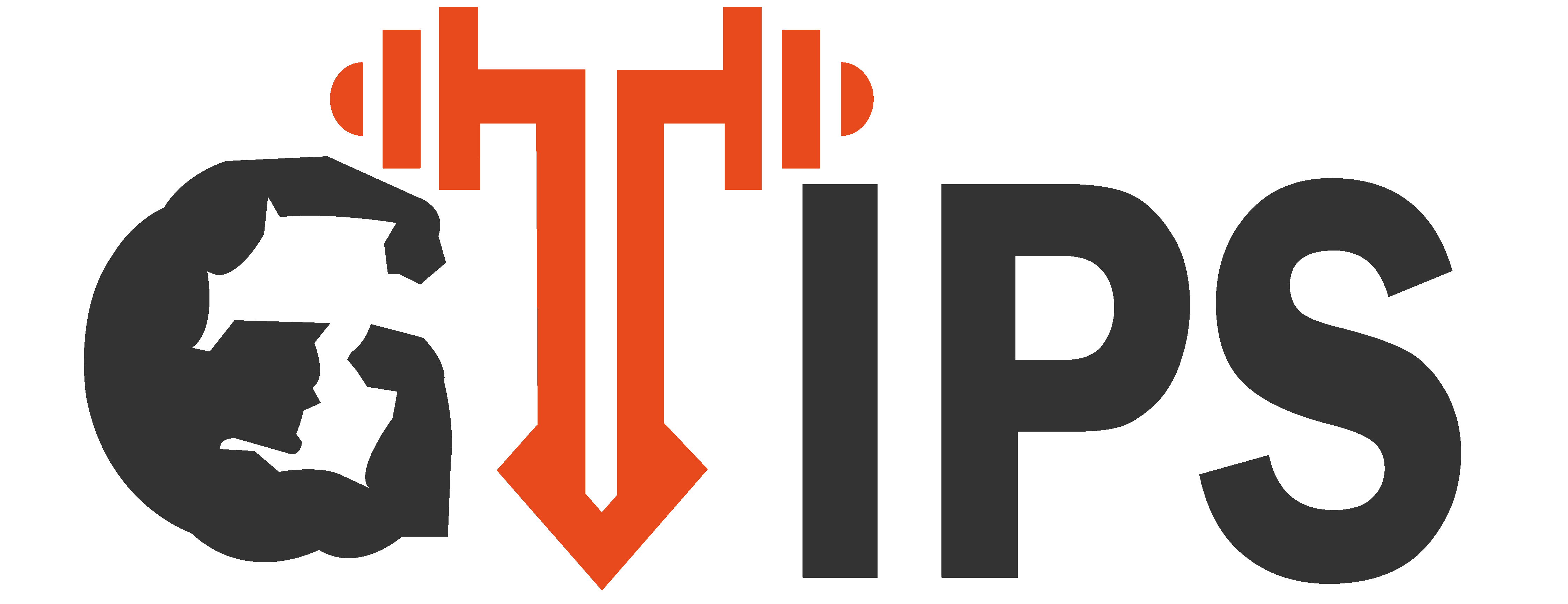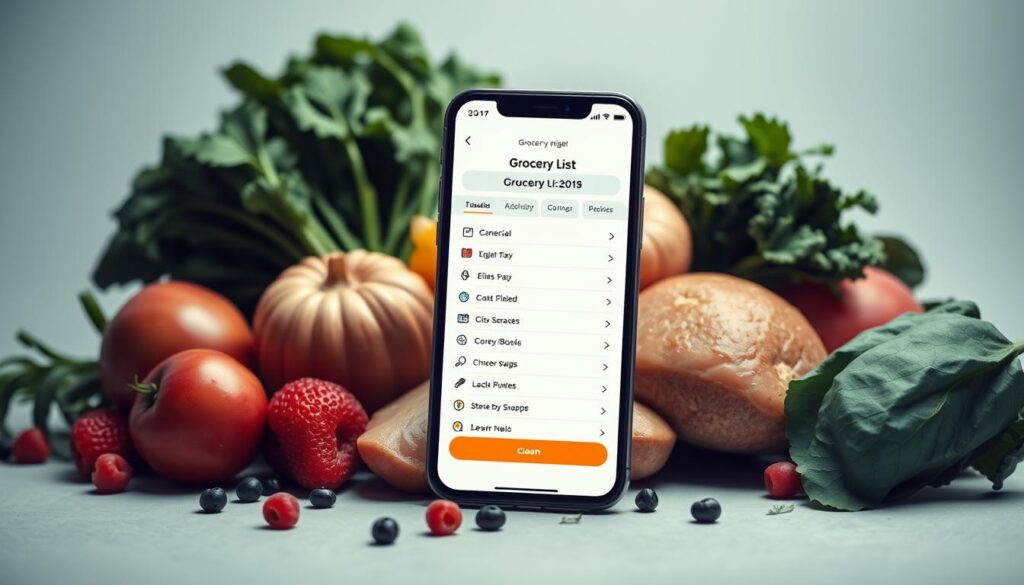Imagine a Sunday evening after a long weekend. You’ve had family gatherings and tasty dinners out. Now, the week ahead seems daunting, wondering what to eat for lunch and dinner. You’re left standing in front of an empty fridge, searching for something to eat. This is a common problem that leads to quick takeout orders and unhealthy food choices.
Stress-free meal planning is more than just what you eat. It’s a way to lose weight, save time, and reduce stress. By using good meal prep strategies, you can plan healthy meals that fit your weight loss goals. You’ll also get to enjoy your favorite foods.
Meal planning for weight loss is a structured way to make smart food choices. It helps you avoid last-minute decisions. Let’s explore the key steps and strategies for starting your healthy meal prep and weight loss journey.
Key Takeaways
- Meal planning can significantly reduce daily stress over food choices.
- Setting realistic weight loss goals enhances motivation and success.
- A balanced meal plan incorporates appropriate macronutrients and micronutrients.
- Budgeting is key for successful meal planning; shop smart to save money.
- Effective time management ensures you stick to your meal prep routine.
Understanding Meal Planning for Weight Loss
Meal planning is a great way to reach your weight loss goals. It helps you organize and prepare meals ahead of time. This way, you can eat foods that fit your taste and calorie needs. A clean eating meal plan makes cooking easier and helps you eat healthier.
What is Meal Planning?
Meal planning means making a plan for your meals and snacks. You pick recipes and shop for groceries to meet your diet needs. It helps you eat the right amount of food to lose weight.
Benefits of Meal Planning
Meal planning has many benefits. It makes your diet consistent, helping you stay on track. It also improves your nutrition, reduces food waste, and adds variety to your meals. Eating foods high in protein and fiber helps you feel full and supports weight loss.
Key Components of Meal Planning
Good meal planning starts with clear goals. Choose recipes that fit your diet plan. Making a grocery list is key for meal prep for beginners. Organizing your list by store sections saves time.
For better meal planning, check out meal planning guides. Being flexible is also important. Your plan should fit your dietary needs and keep you healthy.
With the right approach, meal planning can be a game-changer. It leads to lasting healthy eating habits and supports your overall health.
Setting Realistic Weight Loss Goals
Setting realistic weight loss goals is key for a lasting journey. Goals that are Specific, Measurable, Achievable, Relevant, and Time-bound (SMART) help you succeed. Losing 1 to 2 pounds a week is a safe goal, burning 500 to 750 calories extra each day.
This method relies on careful meal planning and tracking. Use low calorie meal ideas and a meal planning app to track your progress.
How to Define Smart Goals
Start by making your weight loss goals clear. Think about these key points when setting your goals:
- Specific: Clearly state how much weight you want to lose by when.
- Measurable: Find a way to track your progress, like a food diary or app.
- Achievable: Make sure your goals fit your lifestyle and health.
- Relevant: Pick goals that matter to you and fit your health goals.
- Time-bound: Set deadlines to keep yourself motivated, like losing 10 pounds in six months.
Tracking Your Progress
Keeping an accurate record of your weight loss is important. Use a meal planning app to log your meals and workouts. This keeps you accountable and helps spot patterns that help or hurt your progress.
Regular checks let you celebrate small wins, like finding tasty low calorie meal ideas.
Adjusting Goals as Needed
Being flexible in your weight loss journey can help you succeed. As you go, you might need to change your goals based on your progress and lifestyle changes. For example, if you’re losing weight well, you might aim to keep your weight or increase your activity.
Changing your approach keeps you motivated and meets your changing health needs.
Creating a Balanced Meal Plan
Creating a balanced meal plan is key for weight loss. It should include proteins, fats, and carbs for good nutrition. This keeps hunger in check and boosts health. Eating more protein and fiber helps with meal prep, keeping you on track.
Importance of Macronutrients
Knowing about macronutrients is vital for losing weight. A good mix is:
- Carbohydrates: 25% of total calories
- Proteins: 40% of total calories
- Dietary Fats: 35% of total calories
This balance keeps energy steady and helps keep muscles. For 2,000 calories, aim for 1,500 to 1,750 daily.
Incorporating Essential Micronutrients
Micronutrients like vitamins and minerals are also important. Eat lots of fruits and veggies to get them. The 2020-2025 Dietary Guidelines say half your plate should be fruits and veggies. They help with calorie control and add flavor to your meals.
Sample Balanced Meal Ideas
Here are some balanced meal ideas:
| Meal | Calories | Protein (g) | Carbs (g) | Fat (g) |
|---|---|---|---|---|
| Scrambled Eggs (3 large) | 350 | 21 | 17 | 21 |
| Grilled Chicken Breast Salad (4 oz) | 418 | 38 | 11 | 26 |
| Smoothie | 383 | 34 | 45 | 10 |
| Grilled Sirloin with Mixed Veggies (4 oz) | 449 | 36 | 39 | 17 |
Use meal prep containers to make these meals ahead of time. This keeps your diet organized and on track. Each meal is full of nutrients and fits your calorie needs, helping you reach your weight loss goals.
Budgeting for Meal Planning
Effective budgeting is key in meal planning. It helps you stick to a clean eating meal plan without overspending. By learning to calculate your monthly grocery budget and shopping smart, you can eat healthier and save money. Starting with meal prep for beginners makes healthy eating easy and affordable.
Calculating Your Monthly Grocery Budget
The United States Department of Agriculture suggests planning, purchasing, and preparing meals. Start with a monthly budget of about $100 and track your spending. Use tools like the Mayo Clinic Diet Journal to monitor your budget and make adjustments.
The goal is to plan meals that help with weight loss while staying within your budget.
Shopping for Healthy Options on a Budget
When you go shopping, look for seasonal produce. It’s often cheaper and packed with nutrients. Choose store brands over name brands to save money. Buying in bulk, like grains and frozen veggies, can also save you a lot.
Always check the unit prices to find the best deals. Stay away from convenience foods to avoid overspending. Focus on whole foods to prepare at home, making it easier to follow a clean eating meal plan.
Meal Prep Strategies to Save Money
Smart meal prep strategies can save you a lot of money. Cooking big batches of proteins like chicken breast can make multiple meals. Doubling recipes means you have leftovers for future meals, saving time and money.
Batch cooking beans or roasting a chicken can also cut down on waste and save money. These methods help you use your groceries wisely, supporting your weight loss goals and keeping your diet balanced.
Time Management for Meal Preparation
Effective time management is key to successful meal prep. Start by using efficient grocery shopping tips. This ensures you have all the ingredients you need. By using smart meal prep techniques, you can keep up with busy schedules and eat healthy.
Using leftovers creatively helps reduce food waste. It also makes your meal prep efforts more effective.
Efficient Grocery Shopping Tips
Start by making a detailed grocery list. Organize it by food categories to save time. Avoid impulse buys by sticking to your list.
Shop during off-peak hours for a quicker trip. Look for deals on meal prep containers and frozen items. These can be great for your low calorie meal ideas.
Meal Prep Techniques for Busy Schedules
Bulk cooking is a lifesaver when you’re busy. Cooking large portions can last for days. Focus on foods like whole grains, lean proteins, and colorful veggies.
Each meal should have protein, fat, and fiber. Set aside a day each week for meal prep. This keeps your routine consistent.
Utilizing Leftovers Effectively
Turning leftovers into new meals can make your diet more exciting. Try adding different spices or sauces to refresh the flavors. Mix leftover proteins with fresh veggies for quick stir-fries.
Use leftover grains and beans to make hearty soups. This approach keeps your meals interesting and saves time.
Choosing the Right Recipes
Choosing the right recipes is key to enjoying a clean eating meal plan. Healthy recipes add essential nutrients and keep meals exciting. You can find these through nutrition blogs or meal planning apps that fit your diet.
Finding Healthy, Delicious Recipes
Looking for a variety of weight loss recipes makes meal planning easier. Seek out dishes that use whole foods and balanced nutrients. Websites and apps focused on healthy eating offer tasty, seasonal recipes.
Adjusting Recipes for Dietary Needs
Customizing recipes is important, whether for allergies or special diets. You can change ingredients to fit your needs without losing the dish’s flavor. Meal planning apps help by letting you swap ingredients easily.
Seasonal Ingredients to Consider
Using seasonal ingredients saves money and boosts your cooking. Fresh produce in peak seasons is more flavorful and nutritious. Planning meals with these ingredients makes your clean eating plan more enjoyable and effective.
Grocery List Essentials for Weight Loss
A good grocery list is key to meal planning. It helps you shop smart and get all you need for healthy meals. Keep your pantry stocked with essentials for quick, healthy meals. Fresh produce adds color and nutrients to your meals, helping you lose weight.
Organizing Your Grocery List
Start by sorting your list into categories. This makes shopping easier and helps you avoid missing anything. Your list should include:
- Fruits and vegetables
- Proteins
- Dairy or dairy alternatives
- Whole grains
- Healthy fats
Healthy Pantry Staples
Healthy pantry items make cooking simpler. Choose foods with at least 3 grams of fiber for health benefits. Non-fat Greek yogurts have more protein than regular yogurts, boosting your meal plan.
Keep sugar in plant-based foods under 8 grams per serving. Whole grains are better than refined ones, helping your metabolism and health.
Fresh Produce to Include
Eating five servings of fruits and veggies daily aids in weight loss and health. Pick seasonal options for the best taste and nutrition. Try to eat half your plate with these foods for a balanced meal.
Using different colors in your meals makes them look good and ensures you get a variety of nutrients.
Meal Prep Tools and Equipment
Using the right tools makes meal prep easier and faster. Quality kitchen gadgets help you cook healthy meals quickly. They make sure your meals are both nutritious and tasty.
Must-Have Kitchen Gadgets
Tools like chef’s knives, food processors, and spiralizers make prep work simple. A good chef’s knife makes chopping veggies easy. The Cuisinart 14-cup food processor is great for quick chopping and blending.
Investing in Quality Storage Solutions
Good storage keeps your meals fresh and reduces waste. Use glass or BPA-free containers like Rubbermaid’s Brilliance for a tight seal. Beeswax wraps are a green option for leftovers. Choose storage based on durability and ease of use.
Efficient Cooking Tools for Quick Prep
Good cooking tools save time. Slow cookers like the GreenPan model are perfect for busy days. The Instant Pot is versatile, great for pressure cooking and making rice. Pick tools that help you cook healthy meals fast.
| Tool | Function | Price Range |
|---|---|---|
| Cuisinart Food Processor | Chopping and pureeing | $100 – $200 |
| GreenPan Slow Cooker | Slow cooking | $50 – $150 |
| Rubbermaid Brilliance Containers | Food storage | $20 – $40 |
| Beeswax Wraps | Food preservation | $15 – $25 |
Having the right tools makes meal prep easier and supports a healthy lifestyle. They help you make tasty, varied meals. Start your meal prep journey with these tools and check out these simple recipes.
Overcoming Common Meal Planning Challenges
Meal planning can be tough, making it hard to stick to your weight loss goals. Food cravings and staying motivated during meal prep are big challenges. Also, managing social situations that involve eating out can be tricky.
Dealing with Food Cravings
Food cravings can be hard to resist. To fight them, keep healthy snacks like fruits, veggies, and protein-rich foods ready. Eating these snacks in small portions can cut down your calorie intake by 15%.
Also, making weight loss recipes with your favorite ingredients can curb cravings without ruining your meal plan.
Staying Motivated During the Process
Keeping motivated is key to meal prep success. Setting small, achievable goals can make it more enjoyable. Reward yourself for your successes to stay motivated.
Studies show that meal prepping can boost your meal plan adherence by 60%. This means you’ll have healthy meals ready all week, reducing the urge to eat unhealthy foods.
Managing Social Situations and Eating Out
Eating out can be a big challenge, but it’s not impossible. Try to limit your restaurant visits to once or twice a week. When you do eat out, choose places with healthier options to stay on track.
Planning your meals ahead can help you make better choices while enjoying social events. For more tips on handling social eating, check out this guide on meal planning.
Mindful Eating Practices
Mindful eating can greatly improve your health journey. It helps you understand how you relate to food. This includes knowing how much to eat, what triggers your hunger, and your eating habits.
Being present while eating makes meals more enjoyable. It also helps with weight management.
Understanding Portion Control
Controlling your portions is key to healthy eating. It stops you from eating too much and helps you know when you’re full. Eating slowly can make you feel full faster.
Try using smaller plates or serving sizes. This can help you naturally eat the right amount.
The Role of Mindfulness in Eating
Mindful eating strengthens your connection with food. It makes meals more enjoyable. This practice can improve your eating habits and reduce emotional eating.
It fits well with recipes that use whole, nutritious ingredients. This approach supports your weight loss goals.
Techniques to Enhance Your Eating Experience
To make your eating more mindful, try these:
- Eat slowly to enjoy flavors and textures.
- Choose healthier options from your meal plan.
- Stay away from distractions like screens while eating.
- Notice colors and smells before you eat.
- Be thankful for the food you have.
Using these techniques can make eating more satisfying. It can also help with weight management. Mindful eating can change how you approach healthy meal prep, making meals more enjoyable.
Adjusting Your Meal Plan as You Go
Being flexible with your meal planning can really help you succeed. As you start, you might find that your plan needs to change over time. It’s key to check in with yourself and adjust your meal prep to fit your life better.
Evaluating What Works for You
Find out which meals you love and help you reach your goals. A meal planning app can help you see what you like and keep track. Your taste buds are important for sticking to your plan. Try different low calorie meals to find ones that are tasty and healthy.
Adapting to Lifestyle Changes
Life can change in many ways, like a new job or health issues. Being flexible helps you keep your goals even when things get tough. Use your app to quickly change up your meals or ingredients when needed.
Seeking Professional Guidance When Necessary
Talking to a registered dietitian can give you personalized advice. They can help you improve your meal prep, even if you’re just starting. If you’re feeling stuck or notice patterns that aren’t working, getting help can make a big difference.
| Life Changes | Adjustment Strategies |
|---|---|
| New Job | Prepare quick meals and snacks ahead of time |
| Health Issues | Consult with a dietitian for tailored meal options |
| Social Events | Plan meals around events while keeping portions in check |
| Seasonal Changes | Incorporate seasonal produce into your meal prep for variety |
By following these tips, you can make meal prep more fun and easy. Be open to changes and enjoy the journey to healthy eating.
Staying Committed to Your Plan
Sticking to your meal plan is key for losing weight and keeping it off. Having a strong support system boosts your motivation and keeps you accountable. Share your healthy recipes and progress with family, friends, or online groups like the Healthi app. This helps you stay on track and makes healthy choices easier.
The path to a healthier you is about making lasting changes. It’s about creating a meal plan that fits your life, not just quick fixes.
Building a Support System
Surrounding yourself with people who want to be healthy can be a big help. Studies show that friends and family can influence what you eat. Using a meal planning app can also connect you with others who are on the same journey.
Celebrating Your Achievements
It’s important to celebrate your wins along the way. Whether it’s a small weight loss or a week of healthy eating, mark it. Don’t use food as a reward, though. Instead, treat yourself to something non-food related, like new workout clothes or a spa day.
Maintaining Long-Term Success in Weight Loss
Weight loss is a long-term journey that requires constant effort. It takes time to find a diet that works for you. Focus on how you feel, not just the number on the scale.
Use healthy snacks like hummus to control cravings. Keep track of your progress and remember, everyone’s journey is different. Stay committed, keep a positive attitude, and you’ll see results.
FAQ
What is meal planning for weight loss?
Meal planning for weight loss means planning your meals ahead. It helps you stick to your diet goals. You make balanced meals that keep your energy up and cut down on calories.
What are the benefits of meal planning?
Meal planning saves you time and money. It gives you a clear plan for meals, boosts nutrition, and cuts down on stress. It also helps reduce food waste.
How do I create a balanced meal plan?
For a balanced meal plan, focus on the right mix of proteins, fats, and carbs. Don’t forget fruits and veggies for essential nutrients. Choose foods high in protein and fiber to control hunger.
What tips can help me budget for meal planning?
To budget for meal planning, start by setting a monthly grocery budget. Opt for healthy foods and use seasonal ingredients. Use meal prep strategies like batch cooking to save money and reduce waste.
How can I manage my time effectively when meal prepping?
To manage time during meal prep, shop efficiently and cook in bulk. Organize your kitchen and use leftovers creatively. This streamlines your meal prep process.
What should I consider when selecting recipes for meal planning?
Choose recipes that fit your dietary needs. Use nutrition blogs or apps for ideas. Adjust recipes as needed and pick seasonal ingredients for better taste and nutrition.
What are some essential tools I need for meal prep?
You’ll need gadgets like spiralizers and food processors. Good knives for chopping are key. Use airtight containers for food storage. Cooking appliances like slow cookers make prep easier.
How do I overcome challenges in meal planning?
To beat meal planning hurdles, have healthy snacks ready for cravings. Set rewards for your successes. Plan for eating out to make healthier choices.
What is mindful eating, and how can it help with weight loss?
Mindful eating helps you eat better by listening to your body. It’s about eating slowly and enjoying your food. This can help you feel full and manage your weight.
When should I adjust my meal plan?
Adjust your meal plan as your needs change. Life events or personal goals might require changes. Regular checks help tailor your meal plan to your life.
How can I stay committed to my meal plan?
Stay on track by building a support network. Celebrate your successes. Keep refining your meal planning to make healthy eating a habit.






